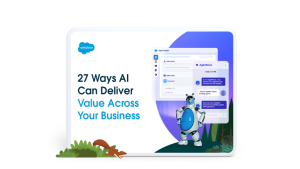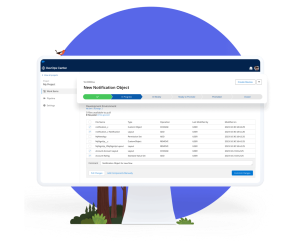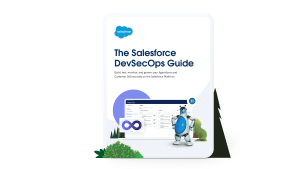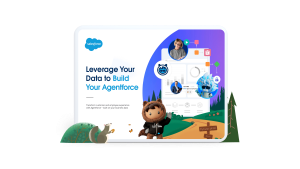Far from being a buzzword, Agile project management underpins numerous successful projects across various sectors. Since its humble beginnings in software development, Agile has evolved into a versatile, industry-agnostic philosophy. Its adaptability, focus on customer satisfaction, and iterative nature make it a go-to approach for companies aiming to stay at the forefront of innovation.Are you looking to understand Agile methodology and why it’s revolutionised project management across multiple industries? In this article, you’ll discover how Agile fosters an environment for continuous improvement and rapid adaptation to change, enabling teams to deliver high-quality products that truly meet customer needs.
Table of Contents
- What is Agile methodology?
- How Agile started: From manifesto to mainstream
- Agile mindset vs. traditional project management
- Types of Agile methodologies
- Benefits of Agile methodologies
- Understanding various Agile project management frameworks
- Core principles of Agile methodology
- How to implement Agile in fast-changing markets
- What are the various tools and technologies to support Agile methodologies?
- The next wave of Agile practices
- Which Agile certifications can you aim for to advance your project management career?
- Frequently Asked Questions
What is Agile methodology?
Agile methodology is a dynamic project management and product development strategy that hinges on collaboration, flexibility, and a customer-centric approach. Agile methodologies provide a toolkit of methods supporting this adaptive mindset, enabling project teams to navigate complex and often fluctuating project requirements with finesse. Today, Agile extends its reach beyond IT, influencing marketing, sales, and even human resources practices, demonstrating its universal appeal and effectiveness.
Key takeaways
Agile project management is a flexible, iterative approach that prioritises customer satisfaction and responsiveness to change. It extends beyond software development into various industries.
The Agile Manifesto emphasises values such as individuals and interactions, working software, customer collaboration, and responding to change, which guide diverse Agile methodologies like Scrum, Kanban, and Extreme Programming (XP).
How Agile started: From manifesto to mainstream
Marking a pivotal shift in the project management paradigm, the Agile Manifesto emerged in 2001 as a declaration of four fundamental values and twelve guiding principles. This seminal document was the brainchild of forward-thinking software developers who recognised the need for an alternative to the sluggish evolution of traditional workflow management methods.
The Agile Manifesto’s values and principles were practical, not just theoretical, laying the groundwork for developing Agile methodologies such as Scrum, Kanban, and Extreme Programming (XP). These methodologies, in turn, catalysed the widespread acceptance and integration of Agile into the tech industry and beyond.
Agile mindset vs. traditional project management
The ethos of Agile is distinguished by its sharp contrast to conventional project management. Where the latter typically follows a linear trajectory—meticulously planning, designing, implementing, and closing—Agile thrives on continuous feedback and adaptation. This approach was borne out of a need to address the limitations of conventional practices like waterfall and Six Sigma, particularly within software development, where requirements and solutions evolve through collaborative efforts between self-organising and cross-functional teams.
Originating as a lighter, more flexible model, Agile offers an alternative to traditional project management’s rigid, overhead-heavy planning, with a focus on continuous planning and adjustment as new information emerges. In contrast to traditional models, Agile fosters a customer-centric focus where roles such as technical writers and software developers work in tandem, aligning documentation with ongoing development to strike a balance between agility and structure.
Unlock productivity like never before by building custom AI apps tailored to your trusted data.

Types of Agile methodologies
Agile is an umbrella term for a set of methodologies, with each framework providing a unique perspective on software development project management. Some well-known frameworks include:
- Scrum, with its sprints and ceremonies
- Kanban, with its visual task boards
- Extreme Programming (XP), with its focus on continuous integration and testing
These frameworks offer distinct approaches to workflow and project progression.
Then there’s the Crystal Agile methodology, which stands out for its emphasis on the human element. It asserts that each project is a singular entity deserving its own tailored set of practices. These methodologies are not just isolated theories but practical, popular agile methodologies that have been tested and refined in the trenches of real-world project management.
Understanding different types of Agile project management frameworks
Scrum, Kanban, and Enterprise Agile frameworks, such as the Scaled Agile Framework (SAFe) excel among various Agile project management frameworks due to their extensive adoption and proven success in handling complex projects. Scrum, the most commonly used framework, is characterised by short sprints, the role of the Scrum master, and key ceremonies that facilitate transparency and continuous improvement.
On the other hand, Kanban leverages visual management to optimise workflow and limit work in progress, offering a different approach to Agile project management. For larger organisations, Enterprise Agile frameworks such as SAFe provide a structured, scalable approach to implementing Agile principles across large, cross-functional teams.
Disciplined Agile Delivery: Tailoring Agile to your needs
Disciplined Agile Delivery (DAD) offers a more holistic approach to Agile, combining a range of delivery lifecycles with guidance tailored for larger organisations. By encompassing leadership, portfolio management, and other vital areas, DAD ensures that Agile methodologies are effectively adapted to address the unique challenges faced in large-scale environments. Its goal-driven approach allows organisations to:
- Modify Agile processes
- Enhance collaboration
- Enable the scaling of Lean and Agile methodologies
- Avoid imposing rigid procedures
Disciplined Agile certifications further empower professionals to borrow elements from multiple Agile approaches, creating a tailored strategy that scales effectively.
Large Scale Scrum (LeSS) for bigger teams
Large Scale Scrum, known as LeSS, is designed to scale the principles of traditional Scrum for larger teams working collaboratively on a single product. It operates on the premise that less is more, advocating for a ‘barely sufficient’ framework rooted in 10 principles that emphasise empirical process control and lean thinking. LeSS comes in two flavours: Basic LeSS for up to eight teams and LeSS Huge for more extensive collaborations, each tailored to accommodate different team sizes and complexities.
In Basic LeSS, core Scrum roles are preserved while introducing expanded managerial roles and a tailored approach to sprint planning that suits larger team dynamics.
Dynamic Systems Development Method (DSDM): Agility in action
The Dynamic Systems Development Method (DSDM) is another comprehensive Agile framework that stands out for its focus on the entire project lifecycle. Established in 1994, DSDM was an early frontrunner in the structured approach to iterative development to align closely with strategic business goals and deliver tangible benefits early in the project lifecycle. Using eight principles, including focusing on business needs, on-time delivery, and never compromising quality, DSDM is scalable, vendor-independent, and applicable across various business sectors.
It incorporates established practices like the MoSCoW Prioritisation technique and Timeboxing and can be tailored to integrate with other methodologies, such as PRINCE2, or complement other Agile methods, such as Scrum.
Benefits of Agile methodologies
The versatility of Agile lies in its responsiveness to new industry demands and its evolution in tandem with emerging trends. Agile methods have been adopted by a diverse range of industries. The principles of Agile are not confined to software development but can be adapted to meet the unique project needs of various sectors, offering several immediate benefits:
Enhanced effectiveness of software development teams
Software development teams rely on Agile practices as catalysts for innovation. A flexible framework also enhances proactive solution-finding and leads to more efficient planning and workflow management. The Agile process positions teams to swiftly respond to market changes and customer feedback, ensuring that long-term plans remain flexible and adaptable. Thus, Agile software development is crucial in maintaining a competitive edge.
Fostering iterative development and continuous improvement
At the heart of Agile is the iterative development cycle, where product refinement is achieved through repeated, incremental stages, allowing for frequent reassessment and tweaking of plans while maintaining a flexible and adaptable mindset.. This cycle is punctuated by periods of reflection, ensuring that continuous improvement remains a constant pursuit for Agile teams. Teams aim to optimise product delivery by evaluating and improving their processes after each iteration, leading to a final product more aligned with market demands.
Better alignment with customer expectations
Agile projects are navigated by the compass of customer feedback. Agile ensures that the features developed add real value and meet user needs, which is fundamental to achieving high levels of customer satisfaction. Agile teams employ various strategies to integrate customer feedback after each iteration, from establishing customer panels for consistent insights to using feedback to inform sprint priorities. This approach ensures that the product evolves in line with user expectations and helps forge a strong bond with the customer base.
For example, Feature Driven Development (FDD), a specific Agile methodology, relies heavily on customer input to steer feature development.
Increased autonomy and empowering teams
Agile is associated with self-organising teams, autonomous groups capable of managing their workload and making decisions grounded in their comprehensive understanding of their tasks. This autonomy can be empowering and challenging as teams navigate obstacles like disparate personality types and communication barriers while maintaining individual accountability.
To reach their full potential, self-organising Agile teams benefit from comprehensive training, coaching, and mentoring programs, which equip them with the skills and knowledge necessary to navigate the complexities of Agile project delivery.
Modernise Change and Release Management with DevOps Centre.

Core principles of Agile methodology
The pillars of Agile methodology are its core values that prioritise:
- People
- Working software
- Customer collaboration
- Responsiveness to change
These values guide Agile teams in their daily practices and decision-making processes, shaping the development and project management culture.
Learn how DevSecOps enables secure, reliable innovation.

How to ensure project management success with Agile methodology
Following these principles, Agile teams can effectively manage projects and deliver successful outcomes.
Prioritise individuals and collaboration over processes and tools
The Pillars of Agile Methodology in Practice
Agile’s success is deeply rooted in prioritising individuals and collaboration over rigid processes and tools. This focus on human interactions fosters a collaborative environment where team efforts are aligned toward shared product goals. By valuing face-to-face communication and fostering a culture of flexibility, Agile teams can swiftly adapt to new requirements and deliver quality results in dynamic situations.
Moreover, using user stories that centre on business value ensures that the benefits delivered are tangible and aligned with the company’s objectives. Regular customer interactions further drive innovation and guarantee that solutions are closely tailored to user needs.
Delivering working software over comprehensive documentation
Agile methodologies are designed to prioritise practical outcomes, ensuring that the end-users receive a product that not only works but works well. While documentation is still an important component of the development process, it is streamlined to be as minimal and useful as possible, complementing rather than overshadowing the software’s functionality.
Customer collaboration over contract negotiation
Agile methodologies emphasise the importance of comprehensive documentation of customer collaboration, which includes:
- Customer collaboration over strict adherence to contracts
- A continuous dialogue with clients
- Managing changes and delivering functionality that truly meets user needs
- Fostering a strong relationship between customers and development teams through frequent feedback loops and adaptability
- Aligning the end product with the original contract and addressing emerging requirements and opportunities
How to implement Agile in fast-changing markets
While Agile is known for its adaptability, there are contexts such as heavily regulated industries or projects with well-defined requirements where its iterative planning and frequent revisions may be less beneficial. Additionally, a company structure that does not support cross-functional collaboration can be a significant barrier to successfully implementing Agile methodologies.
Success with Agile also depends on team preparedness, adequate Agile-specific training, and effective communication. Furthermore, projects that aim to produce repeatable deliverables might find Agile’s inherent variability misaligned with their goals of reproducibility. Choosing the best Agile and DevOps tools is key for enhancing your software development process, and the right platform can make all the difference. When
Adapt Software Development for evolving requirements
Dynamic business environments are particularly suited to Adaptive Software Development (ASD). With its non-linear and fluid structure, ASD enables continuous iteration and problem-solving through its three main phases: Speculate, Collaborate, and Learn.
This approach allows teams to identify and address issues promptly, fostering an environment where learning and adaptation are integral to the development process.
Deploy Agile techniques for continuous delivery and feedback
Designed to support continuous delivery and fast adaptation, Agile techniques incorporate feedback into the development cycle, promoting project success. By embedding quality into every step of the release pipeline, Agile teams can deliver features that are not only timely but also free from critical bugs. This focus on tackling the most complex and error-prone tasks early in the development cycle mitigates the risk of compounded errors and leads to a more robust product release.
Enhance communication and collaboration in Agile teams
Especially for geographically dispersed teams, effective communication is vital to Agile teams. Tools like Zoom facilitate real-time collaboration, supporting essential Agile practices such as daily standups and collaborative sessions.
Additionally, tools like Loom provide asynchronous video collaboration, enabling team members to:
- Stay updated on project developments without disrupting their workflows
- Share information and ideas easily
- Provide feedback and comments on specific parts of a project
- Collaborate effectively, even when working remotely
This is particularly beneficial for Agile teams that value flexibility and efficiency.
Build AI agents and apps, powered by your data. Learn how from 4,000 IT pros.

What are the various tools and technologies to support Agile methodologies?
The success of Agile projects hinges significantly on the synergy between Agile methodologies and the supporting tools and technologies. Agile tools are particularly beneficial in breaking down functional silos within organisations, ensuring that teams with different goals can efficiently work together towards a shared vision. These tools provide comprehensive visibility into projects, maintaining the level of detail teams require to execute complex tasks effectively.
Some examples of Agile tools include:
- Project management tools, which assist Agile teams with planning, visualisation, collaboration, and process optimisation
- Kanban boards, which help teams visualise and manage their workflow
- Scrum boards, which facilitate the organisation and tracking of tasks in a Scrum framework
- Collaboration tools, such as Slack or Microsoft Teams, enable real-time communication and collaboration among team members
- Continuous integration and deployment tools, which automate the process of building, testing, and deploying software
Furthermore, the integration of Artificial Intellgence with Agile methodologies is poised to offer enhanced analysis capabilities and more accurate forecasting for different project phases.
Project management tools tailored for Agile processes
Project management tools such as Git and Jira are instrumental in supporting Agile processes within the Agile toolkit. These tools are tailored to enhance collaboration and manage code changes, key aspects of Agile’s continuous delivery process. Agile project management tools offer features like interactive timelines, scrum and kanban boards, and customisable workflows, which streamline project execution and improve team workflows and communication.
Additionally, by automating repetitive tasks, Jira Automation integrates with tools commonly used by Agile teams, thereby improving team workflows and communication. Adopting cloud technology in Agile practices helps teams reduce costs and enhance their efficiency and market responsiveness, highlighting the importance of tools in supporting Agile methodologies.
Elevate your project management game with invaluable insights and practical tips.

The next wave of Agile practices
Integrating advanced technologies and extending Agile frameworks beyond their conventional domains shapes the future of Agile practices. Some key trends include:
- Artificial intelligence is being integrated into Agile practices to provide predictive analytics for risk management and enhanced decision-making
- Agile methodologies are expanding to accommodate the unique needs of industries like manufacturing and healthcare
- Project management tools are becoming more sophisticated to support remote collaboration and real-time decision-making
These advancements drive the evolution of Agile practices and enable organisations to become more efficient and adaptable in their project management processes.Techniques that embody Agile principles, such as DevOps and Continuous Integration/Continuous Deployment (CI/CD), are evolving to provide greater efficiency and faster value delivery. Moreover, as globalisation continues to influence business practices, Agile adapts to support distributed teams and facilitate cross-cultural collaboration, ensuring that Agile methodologies remain effective globally.
Gain increased visibility, enhance compliance, and develop high-quality products with Salesforce DevOps Centre

Which Agile certifications can you aim for to advance your project management career?
The versatility of Agile is evidenced by its responsiveness to new industry demands aAgile certifications validate a professional’s expertise and dedication to Agile principles. With the growing popularity of Agile methodologies, obtaining certifications can be a strategic career move that enhances one’s competitiveness in the job market, potentially opening doors to new opportunities and a higher income trajectory.
Certifications such as the Certified ScrumMaster (CSM) are globally recognised and valued by employers, signifying a standard level of proficiency and dedication to Agile methodologies.
Agile Alliance and Scrum Master Certifications
The Scrum Alliance offers Certified ScrumMaster (CSM) training, equipping individuals with the practical skills necessary to foster team and organisational agility. To attain this certification, one must complete a 16-hour training course and pass a multiple-choice test, demonstrating a solid understanding of Scrum principles and practices. The certification exam consists of 50 questions and requires a minimum passing score, reflecting a comprehensive grasp of Agile and Scrum concepts.
It’s also worth noting that Agile certifications are not exclusive to project managers; developers, testers, and business analysts within Agile teams can also benefit significantly from these credentials.
Courses like IBM’s AI Product Manager Professional Certificate highlight how Agile concepts are tailored to specific fields, such as AI product management, showcasing Agile’s capacity to evolve and remain relevant in an ever-changing landscape.
How to choose the right Agile certification
When choosing an Agile certification, professionals should define their career objectives, assess the demands of their current roles, explore the different Agile frameworks available, and plan for continuous learning to ensure that they remain at the forefront of Agile practices.
Certifications such as the PMI Agile Certified Practitioner (PMI-ACP) demonstrate an individual’s versatility and ability to apply Agile practices effectively within an Agile team, making it a sought-after credential in the industry.
Agile methodology has proven to be a game-changer from its inception to its current status as a linchpin for project success across various industries. Embrace the Agile mindset, and you may find that it transforms your projects and fosters a culture of collaboration, innovation, and continuous improvement that propels you and your team toward unprecedented success.
Frequently Asked Questions
What are the core values of the Agile Manifesto?
The core values of the Agile Manifesto are individuals and interactions over processes and tools, working software over comprehensive documentation, customer collaboration over contract negotiation, and responding to change over following a plan.
Can Agile methodology be applied outside of software development?
Agile methodology has been successfully implemented in various industries, such as finance, marketing, and construction, proving its adaptability and effectiveness beyond software development.
What is the importance of Agile certifications?
Agile certifications are important as they validate expertise in Agile principles and practices, enhancing career opportunities and competitiveness in the job market potentially leading to increased income.
How does Agile handle customer feedback?
Agile methodologies prioritise customer feedback, integrating it into the development process after each iteration to ensure that the product evolves to meet user needs and adds real value. This makes customer feedback an essential part of the iterative development process.
Are Agile methodologies suitable for every project or industry?
Agile methodologies are unsuitable for every project or industry, especially those with well-known requirements or heavy regulations, where iterative planning and frequent revisions may be unnecessary. Consider the specifics of your project or industry before choosing an approach.
Learn how Salesforce DevOps works








